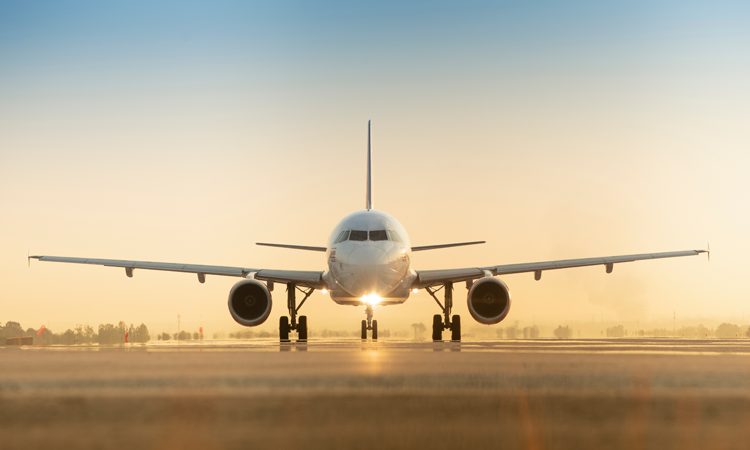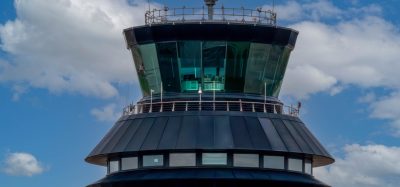European airports handle an additional 660 million passengers in the first half of 2022
Posted: 27 July 2022 | International Airport Review | No comments yet
European airport trade body ACI Europe today released its air traffic report covering the month of June, as well as Q2 and the first half (H1) of 2022.


Passenger traffic in the European airport network jumped by +247 per cent in H1 2022 compared to the same period last year – resulting in airports across the continent handling an additional 660 million passengers.
The increase was predominantly driven by international traffic (+381.2 per cent) rather than domestic traffic (+88.5 per cent). It was also very much concentrated in the second quarter (+245.9 per cent) – following the easing as of March of the Omicron-related restrictions for travel within Europe as well as for an increasing number of external markets.
Airports in the EU+ market1saw by far the biggest jump in passenger traffic in H1 at +348.9 per cent – resulting in their passenger volume increasing to 635 million from 140 million compared to last year. Within the bloc, airports in Ireland (+1,125 per cent), the UK (+833 per cent), Slovakia (+842.2 per cent), Hungary (+784.8 per cent) and Denmark (+611.8 per cent) all experienced extraordinary increases.
Meanwhile, there was more moderate though nonetheless still significant growth in passenger traffic at airports across the rest of Europe2 in H1 at +58.3 per cent.
This reflects the fact that those markets had generally been subjected to less stringent restrictions both locally and for travel throughout the pandemic and had started recovering earlier compared to the EU+ market. This was notably the case for airports in Turkey (+96.3 per cent) but also in smaller markets such as Armenia (+75.6 per cent) and Kazakhstan (+11.5 per cent) – with airports in Israel (+328.9 per cent) being the exception and following a dynamic similar to the EU+ airports. The performance of the non-EU+ market also reflects the impact of the war on Ukrainian airports – with international sanctions weighing on airports in Russia (-3.6 per cent) and Belarus (-16.7 per cent).
Olivier Jankovec, Director General of ACI Europe, commented: “These numbers speak for themselves. If COVID-19 caused an unprecedented collapse in passenger traffic for Europe’s airports, the rebound we have experienced this Spring – especially in the EU+ market – is equally extraordinary. The fact that volumes across the continent still remained ‑28.3 per cent below pre-pandemic levels for the first half of the year should not eclipse the sheer and unprecedented unleashing of pent-up demand that has occurred since March.”
June 2022 closest to full passenger traffic recovery
June 2022 saw passenger traffic across the European airport network making further gains – with the month closing at -17.4 per cent against pre-pandemic (June 2019) levels. This is the strongest monthly performance since the last pre-pandemic reporting in February 2020.
In a reversal of the situation that prevailed throughout the pandemic the EU+ market (-16.6 per cent) outperformed the rest of Europe (-21.7 per cent) in June when compared to pre-pandemic (2019) levels.
A closer look at the performance of national markets in the EU+ market shows the recovery continues to be driven by leisure & VFR demand, as evidenced from the results achieved by airports in countries heavily relying on tourism:
- Airports in Greece (+1.8 per cent) and Luxembourg (0 per cent) were the only ones having fully recovered their pre-pandemic (2019) passenger traffic volumes in June. Airports in Portugal (-2.9 per cent) came close to a full recovery, followed by those in Lithuania (-7.5 per cent) and Norway (-9.9 per cent).
- At the other end of the spectrum, airports in Slovenia (-45.7 per cent), Finland (-36.8 per cent), Bulgaria (-34.1 per cent), Czechia (-33.3 per cent) and Latvia (-28 per cent) struggled to recover more dynamically, notably due to the impact of the war in Ukraine and related international sanctions on Russia.
- Amongst the largest EU+ markets, airports in Spain (-10.8 per cent) and Italy (-12.7 per cent) posted the best results, followed airports in France (-17.6 per cent), the UK (-19.2 per cent) and Germany (-27 per cent).
In the rest of Europe, the best results in June came from airports in the smaller markets of Albania (+59.3 per cent), Bosnia-Herzegovina (+29.9 per cent), Kosovo (+24.8 per cent), Armenia (+16.7 per cent) and Kazakhstan (+13.1 per cent), which far exceeded their pre-pandemic (2019) levels.
Airports in North Macedonia (-5 per cent) and Serbia (-8.7 per cent) came close to full recovery, followed by those in Turkey (-12.4 per cent). Airports in Ukraine have lost all passenger traffic (-100 per cent), with international sanctions impacting the performance of airports in Russia (-27 per cent) and Belarus (-62.1 per cent), as well as those in Montenegro (-60.9 per cent), Georgia (-32.5 per cent) and Moldova (-28.6 per cent).
European airports’ traffic figures for June 2022, as well as Q2 and H1 have been revealed today!
Well done to the top 10 airports by traffic volume – but it’s not all, so:
Find out all the details in our release! 👉 https://t.co/1kTrs1H8mB pic.twitter.com/kdVAXvdE2l
— ACI EUROPE (@ACI_EUROPE) July 27, 2022
The Majors (top five European airports: -17 per cent) and more generally larger airports kept underperforming smaller and regional airports3 (-6.6 per cent) in June, when compared to pre-pandemic (2019) passenger traffic level. This reflects continued travel restrictions on selected Asian markets – in particular in China. However, the Majors still experienced exceptional volume increases compared to last year:
- Istanbul (-1.7 per cent vs. 2019 |+ 115.4 per cent vs 2021) kept leading the league in absolute terms in June, having nearly fully recovered its pre-pandemic passenger volumes.
- London-Heathrow came second in absolute terms (-17.3 per cent vs 2019 | +526 per cent vs. 2021), with the largest volume increase compared to last year.
- The British hub was followed by Paris-CDG (-21.2 per cent vs. 2019|+ 222.9 per cent vs. 2021), Amsterdam-Schiphol (-19.5 per cent vs. 2019 | + 211.8 per cent).
Amongst other large and hub airports, results were far from uniform in June:
- Tourism-fuelled Palma de Mallorca (-3.6 per cent), Lisbon (-6.6 per cent) and Athens (-6.8 per cent) were closest to fully recovering their pre-pandemic (2019) traffic levels.
- Paris-ORY (-10.4 per cent) benefited from its domestic and intra-European focus, while the reliance of Dublin (-11.7 per cent) on the transatlantic market also boosted its results.
- Conversely, Brussels (-28.2 per cent) was heavily impacted by industrial action, and in Helsinki (-36.8 per cent) the exposure to the Asian market with routings that used to involve overflying Russia limited its recovery.
Meanwhile, a number of regional airports serving popular tourism destinations and/or relying on Low Cost Carriers exceeded their pre-pandemic (2019) traffic levels in June, including: Santorini (+72.5 per cent), Tirana (59.3 per cent), Zadar (+39.1 per cent), Funchal (+27.9 per cent), Mikonos (+12.9 per cent), Kerkyra (+12.8 per cent), Kaunas (+8.1 per cent), Menorca (+6.5 per cent), Billund (+5.5 per cent) , Olbia (+4.7 per cent) and Bergamo (+1.1 per cent).
Freight and movements
Freight traffic across the European airport network made limited gains in H1 at -0.8 per cent compared to the same period last year – with EU+ airports at -0.2 per cent and those in the rest of Europe at -5.7 per cent.
This reflects the wider impact of the war in Ukraine on supply chains, which sent freight traffic on a downward trend as of last February – with the month of June closing at -4.5 per cent (-3.8 per cent at EU+ airports and -9.2 per cent for airports in the rest of Europe). This has not erased all gains made in the recovery: freight traffic in H1 remained +5 per cent above pre-pandemic (2019) levels.
Aircraft movements increased by +127.9 per cent in H1 and by +84.1 per cent in June compared to the same periods last year.
References
1 EU, EEA, Switzerland and UK.
2 Albania, Armenia, Belarus, Bosnia & Herzegovina, Georgia, Israel, Kazakhstan, Kosovo, Northern Macedonia, Moldova, Montenegro, Russia, Serbia, Turkey, Ukraine and Uzbekistan.
3 Airports with less than 5 million passenger per annum (2019).
Related topics
Related airports
Amsterdam Airport Schiphol (AMS), Istanbul Airport (IST), London Heathrow Airport (LHR), Paris Charles de Gaulle Airport (CDG), Paris Orly Airport (ORY)


















